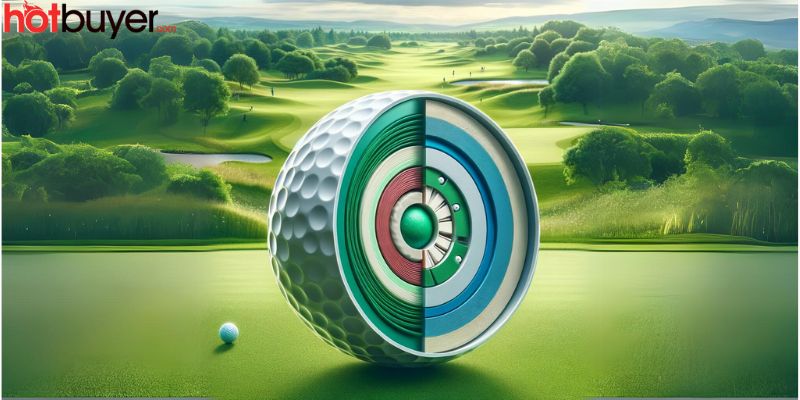Golf ball construction plays a pivotal role in how the ball behaves on the course.
From the tee to the green, the make-up of a golf ball can affect everything from distance to spin.
Understanding the intricacies of golf ball construction can help you select a ball that complements your playing style, ultimately enhancing your game.
This guide will delve into the construction of golf balls, aid you in choosing the right ball based on your skill level, and provide a comparison of top brands and models.
Understanding Golf Ball Construction
The construction of a golf ball is critical because it directly influences the ball’s performance characteristics such as flight, distance, and feel.
Core
The core is often considered the engine of the golf ball.
For most modern golf balls, the core is primarily designed to maximize energy transfer from the club face to the ball, influencing distance and flight speed.
Materials typically used in the core include polybutadiene, a type of synthetic rubber, which offers a great balance of hardness and elasticity.
Cover
The cover of the golf ball affects how it reacts upon impact with the club and during its flight.
Urethane and Surlyn are two common materials used for golf ball covers.
Urethane covers are typically found in multi-layer golf balls preferred by advanced players for their soft feel and high spin rates around greens.
Surlyn covers are harder, providing more durability and reduced spin, which might suit high-handicap and beginner players looking for distance and durability.
Layers
Golf balls can range from two to five layers, each designed to impact the game differently.
Two-piece golf balls are basic and durable, often recommended for beginners due to their lower cost and simplicity in design.
Multi-layer golf balls, such as three-piece or four-piece, offer better players more control and the ability to execute more precise shots that require specific spins.
How to Choose Golf Balls Based on Your Skill Level
Choosing the right golf ball is crucial as it must match your skill level and the goals you have for your game.
Beginners
If you are just starting, it’s advisable to opt for two-piece golf balls.
These balls are generally cheaper and designed to provide maximum distance, which can be helpful as you work on your swing and learn the nuances of the game.
Intermediate Players
For those who have some experience and are looking to improve their game further, three-piece golf balls might be ideal.
These balls offer a nice balance between distance and feel, providing more control without sacrificing too much length.
Advanced Players
Advanced players often benefit from using four-piece golf balls or even five-piece configurations, depending on their specific needs.
These balls are designed to provide specific performance benefits like enhanced spin control and a softer feel, crucial for skilled shots on the green.
Comparing Top Brands and Models
When it comes to golf balls, several brands consistently stand out due to their quality, innovation, and variety.
Titleist Pro V1
Regarded as one of the best golf balls on the market, the Titleist Pro V1 is a favorite among tour professionals and low-handicap amateurs.
It offers exceptional distance and an even more impressive green-side control.
Callaway Chrome Soft
This Callaway golf ball is known for its incredible feel and excellent control, suitable for players with moderate swing speeds.
It combines Tour-proven distance and performance with unparalleled feel and exceptional mis-hit forgiveness.
TaylorMade TP5
This five-layer golf ball is designed to provide players with superior performance in all aspects of their game.
It integrates a Tri-Fast core for maximum carry and low drag and a Dual-Spin cover that offers an ultra-soft feel and pinpoint control.
Choosing the right golf ball is as important as selecting the right club.
By understanding golf ball construction and how it relates to performance, you can make more informed decisions that improve your play.
Whether you’re looking for a budget gift for a beginner or a premium ball for a seasoned golfer, there’s a golf ball perfectly suited to every player’s needs.
What factors should I consider when choosing a golf ball?
Users typically want to know how different aspects of golf ball construction—like the core, cover, and number of layers—affect performance and which features they should consider based on their playing style.
How does the construction of a golf ball influence its performance?
This question arises as golfers seek to understand the specific roles of the core, cover, and layers in affecting distance, flight, and spin.
What are the best golf balls for beginners?
Beginners often search for recommendations on the best golf balls to use when starting out, focusing on options that enhance distance and are cost-effective.

